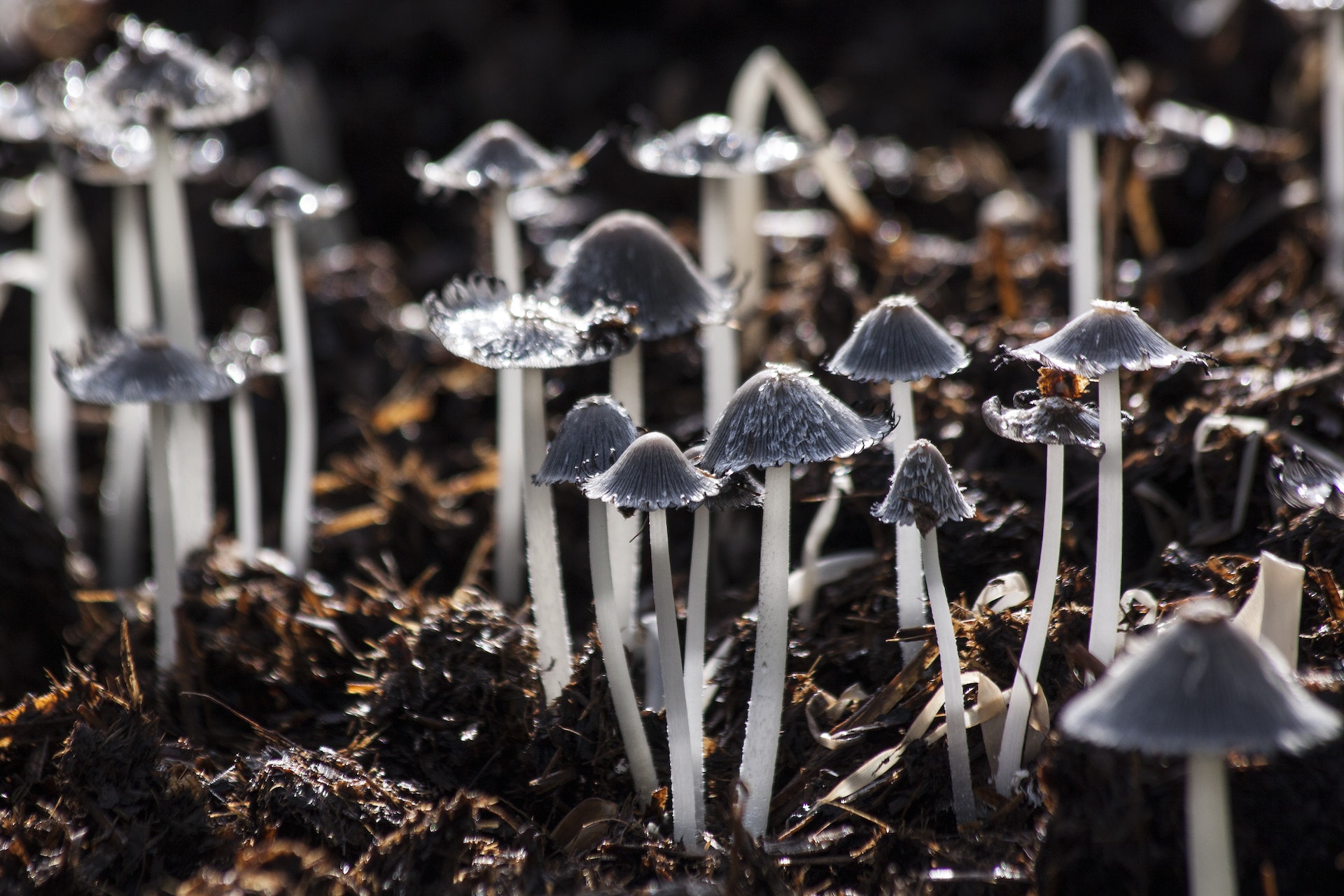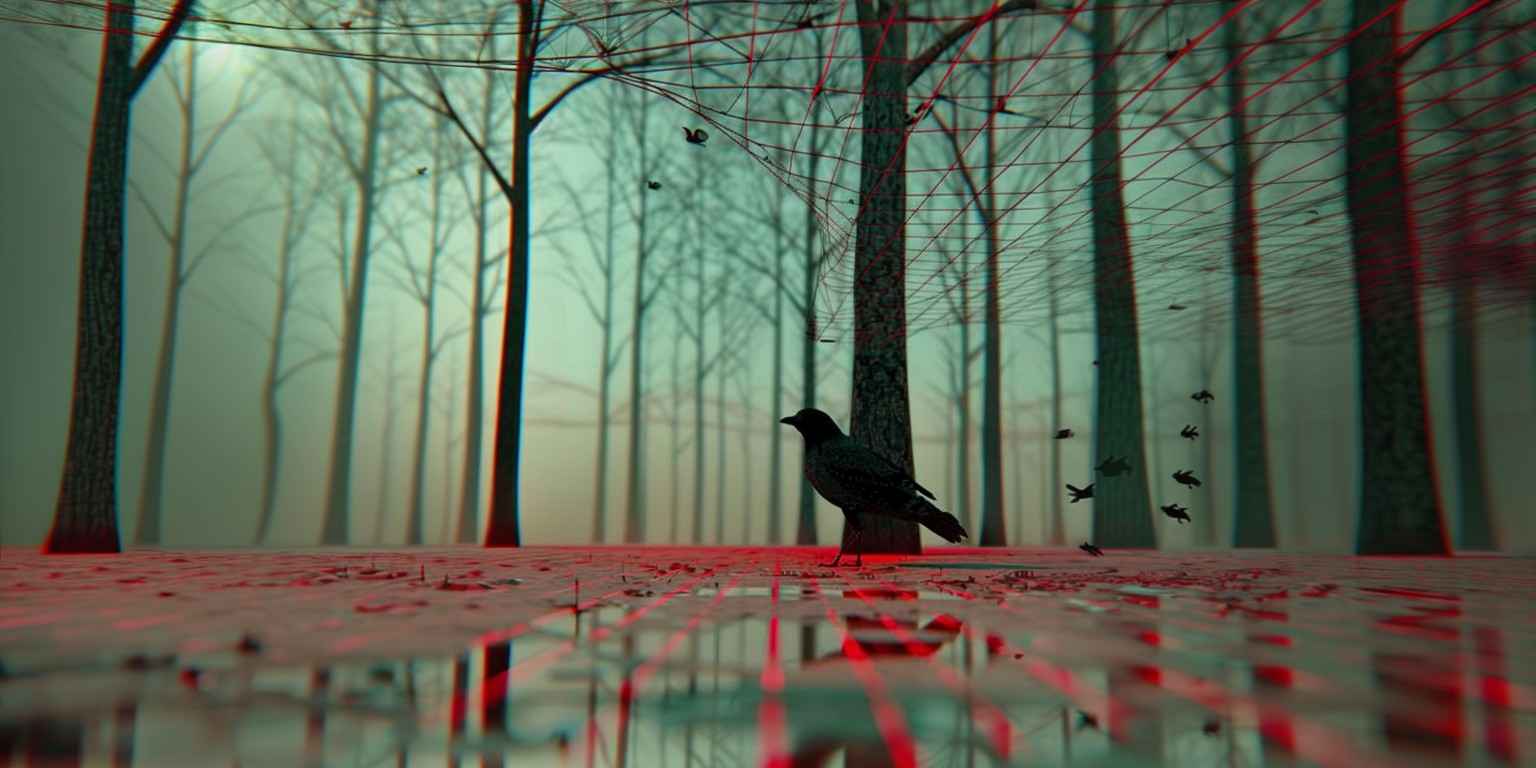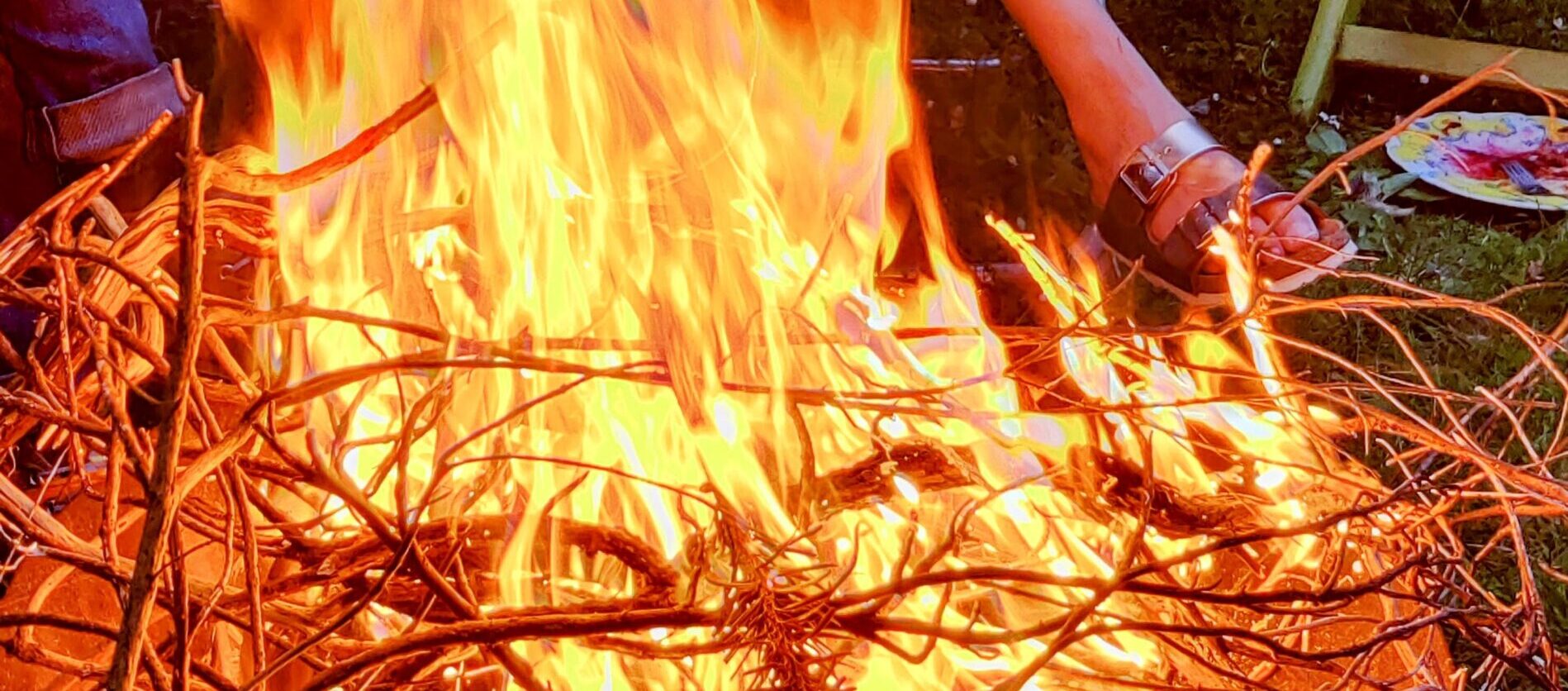
Human beings have always changed their consciousness by ingesting substances. Alcohol, tobacco and caffeine are legal means to do this in our society, while cocaine, heroin, cannabis, ketamine, LSD, MDMA or magic mushrooms are prohibited.
Drugs don’t change consciousness in any consistent way. Some of them provide a delicious comfort blanket, numbing the pain of existence. Some make us feel excited, important, or happy. And some – the psychedelics – create a radically altered state of consciousness, often taking us into mystical states in which deep questions about the nature of reality present themselves in a different light. In this blog post, I want to write about some experiences that I’ve had in the course of fifty or sixty high-dose psychedelics.
using drugs
Before diving into this, I think it’s worth noting that while we conventionally say that people ‘use’ drugs, it could also be said that in a sense drugs use people, creating a culture around them that has certain characteristics. In his groundbreaking 2015 book, ‘Blitzed: Drugs in Nazi Germany’, Norman Ohler explored the surprising role played by drugs in the rise of the Third Reich. Already in the 1930s German housewives were being encouraged to take Pervitin, a commercial form of crystal meth, in order to help them complete their daily chores more effectively. By the time of the outbreak of the war, Rommel and his tank commanders were making use of this same drug to stay awake for days while entering France through the Ardennes. There is evidence that ‘Blitzkreig’ (Lightning War) was not so much a brilliant strategy, as an emergent behaviour: the tanks didn’t stop because the commanders, in a haze of crystal meth, simply ignored orders to stop. This, together with the cocktail of drugs Adolf Hitler was ingesting daily by the end of the war, raises deep questions about the part drugs can play in our culture.
A similar thing could be said about the relationship between our financial system and cocaine. A psychotherapist friend of mine who worked in the early 2000s with bankers in London heard stories of trays of cocaine sitting ready in the offices. I don’t have personal experience of this substance, but it seems to create a sense of supreme self-importance and egotism. The financial collapse of 2008, and all of the misery and destruction of society that has followed from that, could be seen as an expression of the spirit of cocaine.
Another well-known example is the effect that the large-scale use of MDMA (Ecstasy) had on youth culture in the late 1980s and early 1990s. Suddenly everyone was able to dance, and there was a reduction in phenomena such as football hooliganism and alcohol-related violence. Although this eventually revealed its dark side too, the temporary replacement of alcohol with Ecstasy changed the modern industrial world.
relating to drugs
When we ‘take’ a drug, then, it also takes us. Perhaps it would be more helpful to regard the experience of ingesting a drug as one of entering into a temporary relationship with it. Like any relationship, it will offer something unique, given the variables involved. In the 1960s users of psychedelics spoke about set, setting and substance. Set means the mindset of the person when they take the drug. Setting means the place and time when it’s taken. And substance, as I have been saying, is the plant or fungus or chemical that you are ingesting, which could be regarded as a being with its own spirit. Perhaps if we think of this not as ‘using’ a drug, but as interacting with a spirit, we might be closer to the reality of what we are doing.
My own experience with psychedelics is mainly with what are called ‘magic mushrooms’, of a kind that grow in temperate places like the UK, known as Liberty Caps. According to a certain view, the effect of these mushrooms is due to their ability to produce psilocin and psilocybin, which are called the ‘active ingredient’ of the mushroom. While there may be some truth in this, since psilocybin when it is chemically synthesised will have a similar effect, we have no idea about the effects of the thousands of other compounds also found in the mushroom. Perhaps we should also wonder about the ethics of extracting what we want from a living being, as if the natural world only existed as a ‘standing reserve’ for our use, as Martin Heidegger says.
Martin Buber’s concept of the ‘I-Thou’ relationship is useful here. He suggests that conventionally, we regard other beings as ‘It’ rather than as ‘Thou’: as a thing that is more or less useful to oneself. Clearly, it would be right to treat all humans as ‘Thou’, but what about animals, plants, even apparently inanimate objects? I think we should regard our encounter with the mushroom as a dance with that spirit.
early experiences
The first time I did this, I was lying in a sunny field with my eyes closed, watching with amazement as incredible fan-vaulted structures spontaneously created themselves in my mind’s eye. I was marvelling at this and wondering about whether this beautiful vision was a gift of the mushroom spirits. Then my vision zoomed in closer to these architectural forms, and I saw that they were made up of what seemed to be insect mandibles, feelers, jointed limbs and tentacles. I snapped my eyes open: I had had enough of these ‘gifts’!
It was both scary and amusing, but my reflection on that moment was that I was in connection with an entity that had its own sense and feeling about things. I could not think of the mushrooms as friendly little pixies that were there to give me fun trippy experiences. In further explorations, I wondered about the mushroom consciousness and what it might be truly like. Even to speak of ‘mushrooms’ is wrong, since the mushroom is only one aspect of the fungus, essentially its sexual organs. Fungi procreate in two ways: asexually by replicating themselves through the environment, growing under the soil or through plants and trees; and sexually by spreading male and female spores. The more characteristic form of the fungus is the web-like mycelium, all connection and no centre.
After I had experimented with mushrooms at home for a while, I began to more frequently take a walk while tripping. It struck me that the mushroom spirit liked to be out and about, and that it had a feeling for anything that was organic and alive. It was very difficult to be in a city while on mushrooms, for example, but being in a woodland was achingly beautiful. Others disagree with this, but in my experience LSD makes everything seem alive, while mushrooms have a clear preference for living things.
Many of my trip experiences on mushrooms had a dimension of grief about the destruction of the biosphere. There was also a theme of guilt or shame about my part in that, as a member of the human race. The following anecdotes show how my understanding developed over the course of about three years. I am not suggesting that this represents some kind of revelation from the mushroom spirits, except insofar as I have found it personally enlightening, and hope that others may too.
In the early days of tripping outside in the natural environment, I wondered about the experience of stunning beauty that I was having. I began to think of it as a communication, and this brought me to a tragic thought: that the beauty of the natural world was a prayer or offering to the human world, asking us not to destroy it altogether. I found that when I came to this thought, the intense beauty seemed to calm down, as if it had been heard. It seemed that all of reality was a sadomasochistic game of power, and that now, in the end game, we have the whip hand.
Later, I began to question this. There is no doubt that we are in the Anthropocene, the era in which human beings have become ‘masters and possessors of nature’, fulfilling the prophetic words of Francis Bacon in the 17th Century. It’s also clear that if we continue along this same path, we will destroy the biosphere on which our existence depends. If we follow this thinking in a certain direction, it seems to bring us to a realisation that we are the abusers of Mother Nature, the violators of her sacred trust.
The problem with this view, it seemed to me, is that it suggested that we were not ourselves a part of nature. A thought that came to me on a trip was that “the dolphins would fuck up the world – if they could”. Just as sheep have devastated the landscape of Britain, and as rabbits have done in Australia, any living thing will do its best to fully exploit its environment, even to the point of destroying that environment. While it is true that some human societies have shown great care over vast periods of time for their environment, over the long term we have followed our nature. To anthropomorphise, this destruction is not only of nature, but by nature, and therefore in ‘Her Nature’.
This is not to say that we should do nothing about it; but that idealising Nature will only end up separating us from her, and from ourselves. It seems that we humans have become ontologically the dark masculine – that is, dominant, independent, controlling, powerful, grasping and cold – embodying certain qualities that then become imagined as opposite to Mother Nature, who wants only that we should love each other. In terms of Transactional Analysis, Mother Nature is victim, and we are the persecutor; though we try periodically to ‘save the planet’, and become her rescuer.
Mother Nature, it seems, may have a victim complex.
entity encounters
I’ve been speaking of the mushrooms as a spirit, a being with consciousness and intention, and I think this is a reasonable approach. Not only does it make sense, it accords with the beliefs of most cultures in the world apart from the modern, that we are surrounded by spirits of all kinds. On a couple of occasions I’ve had experiences in which I met an entity that appeared to have its own existence and personality.
Whether these were ‘real’ or not is an interesting question. I think that they could be understood as aspects of my psyche, but we need to entertain the possibility that this kind of entity may have been more than that. There are many who have had dozens of such encounters, and indeed far more explicit communications than I have had, especially under the influence of DMT. A 2022 conference on the “Sentient Other” attracted some of the leading minds in consciousness research and psychedelics. If we are to be open minded, then we cannot close down either possibility. Believing immediately in entities may be giving them too much credence; while the belief that every weird occurrence must be the product of psychosis or illusion closes off all kinds of possibilities even from exploration.
Perhaps the best approach to these experiences is one of both-and, rather than either-or. They are connected to one’s own psychology, and they also may be more than that.
the queen
The first of these was a kind of ant or wasp Queen, an impossibly powerful super-predator like the Queen in Aliens. She burst into my room and I felt like I had been thrown across the bed and onto the floor, where I waited for what might happen. I cowered in fear before her, and I said to her that she was in charge now, and not me. After a while, however, I started to wonder why it was that I was still alive. And it seemed to me that since I was still alive, she must want, or even need something from me.
It struck me how extremely ugly and horrible she was, and I began to feel pity for her. And I began to dance, at first moving my hand, and then my arm, and then my whole body. It seemed to me that she had all the power in life, and none of its beauty. If it is true that, as Jung says, the soul of the masculine is feminine, and the soul of the feminine is masculine, then perhaps the outer truth that the masculine is powerful and the feminine beautiful is complemented by an inner truth of masculine beauty and feminine power. (I am aware of how questionable these gendered polar opposites are, and perhaps at at deeper level there could be aspects of active / passive, dominant / submissive, or yin / yang. The main point may be that the opposites conflict until they reveal, or evolve into, a higher unity.)
That seemed to be what she needed from my dance – redemption from her relentless ugly power. Relating to her in this way, as if she had a beauty that even she could not see, one that I could appreciate and dance with, was what she wanted.
I began to wonder about the dark aspects that would be concealed by this drama of ‘feminine’ and ‘masculine’. All of us would prefer not to see certain things about ourselves, and so we project those aspects out onto others. Perhaps the natural world is no different to this. Perhaps humans are not the villains we imagine ourselves to be, but merely the part of nature that is carrying the can for the whole. I began to think of the most nightmarish aspects of the human world – the Nazi Holocaust, the Soviet Gulag, the all-consuming strangulation of global capitalism – and to notice their similarity to certain natural systems, like an ant colony. As Erik Davis notes, asking the question about what humans are, we resemble primates in one way, but insects in another. The truly horrifying thing about these systems of control and extraction is not that they exist to consume resources, but that they are systematised so that they do so indifferently. A Nazi guard executes a prisoner, and reports that they have been ‘processed’. A politician announces that we cannot afford to pay the working people who run our health services enough to live on, as if that is not a policy choice with consequences for people, but an inevitability.
An ant colony is led, in a sense, by its Queen. Similarly, the Artificial Intelligence system in the film ‘The Matrix’, means simply ‘Mother’. If the outer narrative of this great drama is that ‘Man’ destroys his Mother, perhaps the inner truth – complementary rather than contradictory – is that everything is the Mother, but that the worst of her darkness is projected out onto an apparently evil perpetrator. The form that the mother takes is that of an algorithm, executing commands and processes without concern for the suffering this causes. And she cannot be concerned, since she is driven on, in all of us, by the need to survive and thrive. This is the “war of all against all” first glimpsed by Charles Darwin “in the smiling fields and hedgerows”, the insight that horrified him so deeply that it made him repeatedly physically ill.
the kathaka
Another trip story. This one was shaped by the myth told in the 2,500 year old Katha Upanishad, in which a boy, Nachiketas, is sent to the House of Death by his father, and he questions Death, extracting from him the teaching of the Upanishad. Part of this is the terrific vision of the nature of the Brahman, the cosmic reality:
It is a great terror, an upraised thunderbolt.
They who know this become immortal
From fear of it, Fire burns.
From fear, Sun shines.
From fear both Lightning and Wind,
And Death, the fifth, run on.
In my trip, I went into a mountain which was the lair of the god of destruction, whose name was the Kathaka. The air was hot and red and filled with billions of insect wings. Finally I came to the throne of the Kathaka, as a very small boy, to ask him a question that only he could answer. Only he could answer it truthfully, because only he was without mercy or compassion. I needed to know if the terrible things that happened in my infancy were due to my fault, because this was how it felt to me.
And I asked him: “Did I do anything wrong?”
He was silent for a moment, and then answered in his terrible voice, suddenly full of sadness, “No, nothing wrong”.
And then I was outside, on the snowy peak, and the Kathaka had taken on a different form, that of the mountain itself, and the snows were his feathers, indescribably beautiful like a great eagle. And I knew his other face was that of mercy. Only when we have faced the greatest terror, that which terrifies even fire, the sun, lightning, wind, and death itself, can we pass beyond it.
I have told that story twice before, and it brings tears to my eyes once again.
medicinal weirdness
This is of course a weird way to think about reality. It might be said that this is irrelevant to the task of psychotherapy, and that when we talk about psychedelics we need to focus not on the enlightenment they may offer, but on how they can help people to get better.
I would agree with that, yet I think that sometimes the medicine that we need is a measured dose of the true horror of reality. Until we know that we have faced the true darkness, it is constantly lurking, foreshadowed by a menacing soundtrack, but never quite showing itself. This is the paradox of weird fiction, like that of Mary Shelley, HP Lovecraft, Edgar Allan Poe, or Thomas Ligotti: what it seems to be telling us is that the universe is a nightmarish trap; yet by showing us this trap, forcing us to confront it, we discover that we are strangely consoled.
Things may be bad – worse than we could ever have imagined – yet when we fully know how bad they are, we can at least make a start.
What the mushrooms seem to have been telling me is that the natural world is in a trap, one from which it cannot escape without a self-aware psyche. We, the humans, are the part of her that has been evolved for this purpose. For the moment we bear the full burden of coming to know our own destructiveness; a burden we can only set down by forgiving ourselves that, through coming to know it as an aspect of our ancient nature. It’s only when we can move out of the guilt and shame that seems to be inherent in existence, that we can choose to do something other than our nature commands of us.
(c) Weird Therapy 2023
Copyright © 2022 My Sunset by Bogdan Bendziukov.




